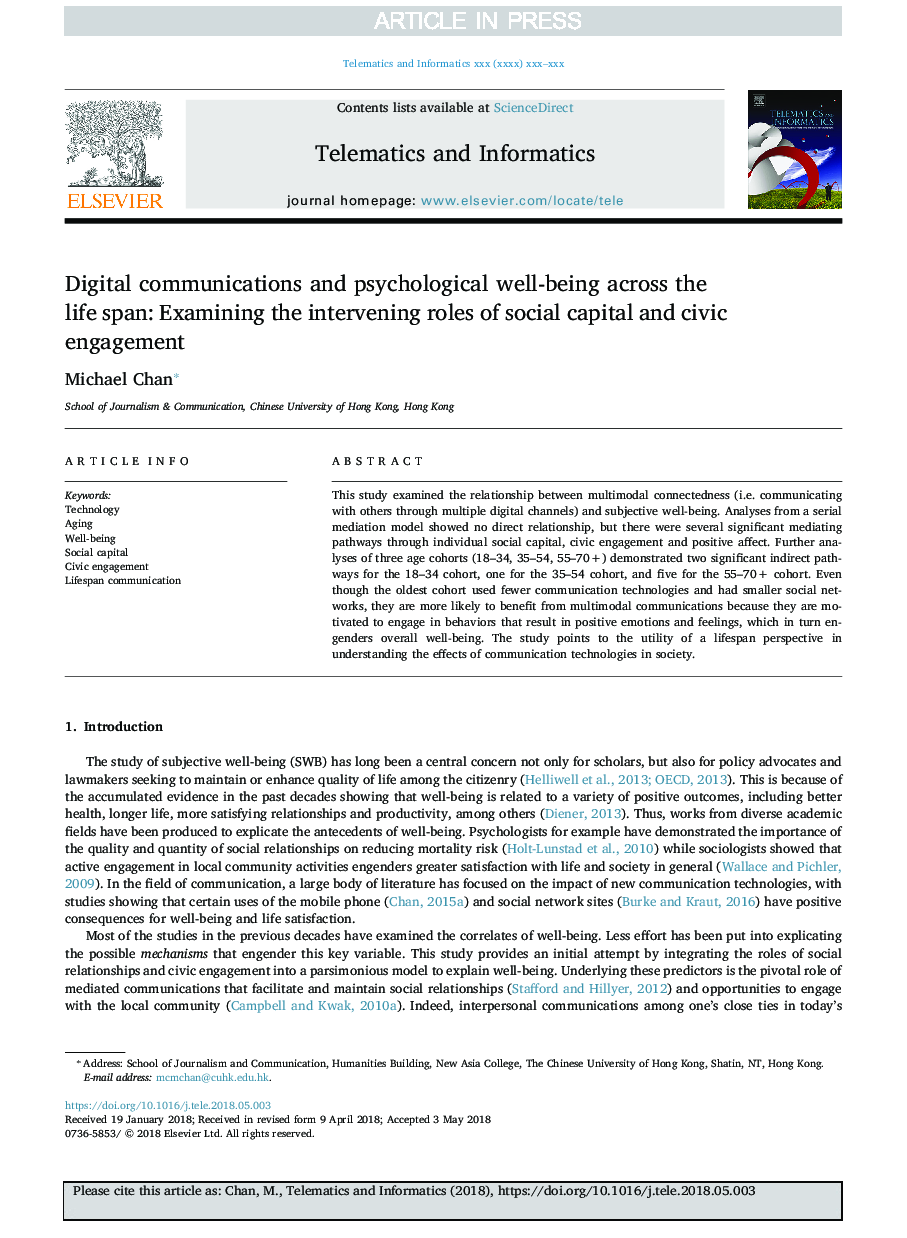| Article ID | Journal | Published Year | Pages | File Type |
|---|---|---|---|---|
| 6889502 | Telematics and Informatics | 2018 | 11 Pages |
Abstract
This study examined the relationship between multimodal connectedness (i.e. communicating with others through multiple digital channels) and subjective well-being. Analyses from a serial mediation model showed no direct relationship, but there were several significant mediating pathways through individual social capital, civic engagement and positive affect. Further analyses of three age cohorts (18-34, 35-54, 55-70+) demonstrated two significant indirect pathways for the 18-34 cohort, one for the 35-54 cohort, and five for the 55-70+ cohort. Even though the oldest cohort used fewer communication technologies and had smaller social networks, they are more likely to benefit from multimodal communications because they are motivated to engage in behaviors that result in positive emotions and feelings, which in turn engenders overall well-being. The study points to the utility of a lifespan perspective in understanding the effects of communication technologies in society.
Related Topics
Physical Sciences and Engineering
Computer Science
Computer Networks and Communications
Authors
Michael Chan,
